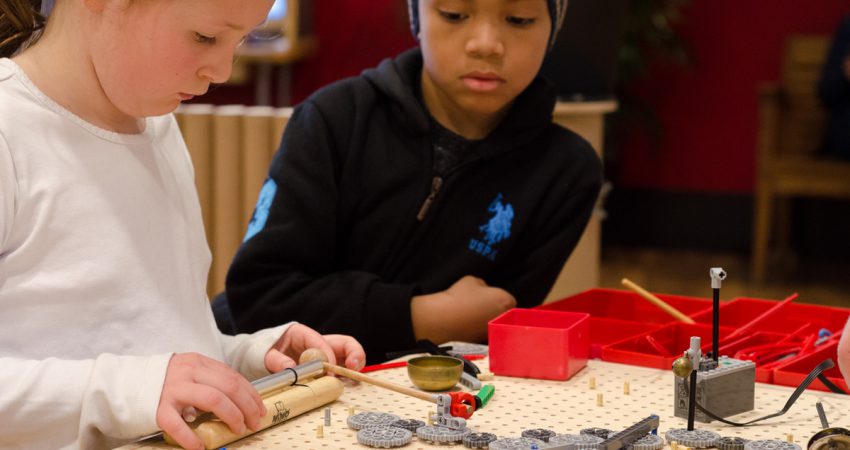
By Heather King - September 2014
PAPER CITATION
Mujtaba, T., & Reiss, M. J. (2013). What sort of girl wants to study physics after the age of 16? Findings from a large-scale UK survey. Journal of Science Education, 35(17), 2979–2998. doi:10.1080/09500693.2012.681076
This paper reports tendencies in girls’ and boys’ motivations, attitudes, and perceptions toward studying physics after age 16. In the U.K., the attainment levels of boys and girls in physics at age 16 are similar, with girls, if anything, doing slightly better. However, even after controlling for entry requirements, i.e. having previously studied the necessary courses, substantially fewer girls than boys go on to pursue physics after age 16.
Prior studies have examined issues of competitiveness, confidence, the influence of schools and of teachers, levels of student interest, and whether the physics curriculum offers socially relevant content (Bøe & Henriksen, 2013; Bøe, Henriksen, Lyons, & Schreiner, 2011; Hampden-Thompson & Bennett, 2013). In this study, 5,642 year 10 students completed a 130-item physics-specific questionnaire. The students were all one year away from making their choices of which subjects to study post-16. All were eligible to continue with physics in that they were currently studying for the necessary prerequisite qualifications.
The analysis involved comparing responses from four groups:
- Boys who expressed an intention to continue with physics
- Girls who expressed an intention to continue with physics
- Boys who did not intend to continue with physics
- Girls who did not intend to continue with physics
The aim of the comparison was to determine whether gender accounted for differences in aspirations, perceptions, motivations, and attitudes.
For some constructs in the questionnaire, there was no statistically significant difference between boys and girls with the same intention. For example, among those who intended to continue with physics, there was no difference in perceptions of extrinsic gain between the genders. Furthermore, both boys and girls who intended to continue studying physics had more positive perceptions of physics and of their teachers than those who did not.
For some constructs, however, responses were gender-related. Girls in both intention groups scored more highly than the boys on items testing understanding of core physics content, but their scores for confidence and self-concept (belief in their ability) were lower than the boys’. Interestingly, however, the girls who expressed an intention to study physics were found to be more competitive than any other group, including boys who intended to continue.
Perhaps most significantly — especially for those involved in promoting science careers — boys reported receiving more advice and experiencing greater pressure to study physics than girls. They also had more support at home for physics achievement.
In reviewing their findings, Mujtaba and Reiss conclude that girls who do not intend to participate in physics after age 16 are “switched off” physics not only by their physics environment at school, but also by issues outside of school. They receive less encouragement than boys to continue in physics and less advice about the intrinsic and extrinsic value of physics.
Implications for Practice
The findings from this study point to the need to design learning opportunities — be they school curricula or museum and afterschool programmes — that appeal to girls. In order to increase the number of girls studying physics, pedagogies and assessments must allow greater student voice, involvement, and creativity. Educators may also need to emphasize the social and societal benefits that a degree in physics can confer, as these aspects have been found to be appealing to girls (Bøe et al., 2011). Such efforts will respond to calls for greater female engagement in physics for reasons of equity.
However, the findings also provide interesting data for policy makers more concerned with increasing female engagement for reasons of economic productivity. From the data, it would appear that the main difference between girls who intend to continue studying physics and those who don’t is that the latter have not absorbed — or been sufficiently persuaded by — the argument that the study of physics will be economically beneficial in the future.
In short, the policy implications arising from this paper are complicated and manifold. There is clearly a need to advise and support girls more in their physics decision-making processes. But should such efforts involve a more concerted push of the economic arguments? Or should effort be directed at changing the curriculum so that it is more female-friendly?
In many informal science learning settings, the primary aim has always been to support wider scientific literacy. But in the current economic climate, it might become necessary to adopt the rhetoric of economics in order to retain funding for youth science programmes.
References
Bøe, M. V., Henriksen, E. K., Lyons, T., & Schreiner, C. (2011). Participation in science and technology: Young people’s achievement-related choices in late-modern societies. Studies in Science Education, 47(1), 37–72.
Bøe, M. V. & Henriksen, E. K. (2013). Love it or leave it: Norwegian students’ motivations and expectations for postcompulsory physics. Science Education, 97(4), 550–573. doi:10.1002/sce.21068
Hampden-Thompson, G., & Bennett, J. (2013). Science teaching and learning activities and students’ engagement in science. International Journal of Science Education, 35(8), 1325–1343. doi: 10.1080/09500693.2011.608093




